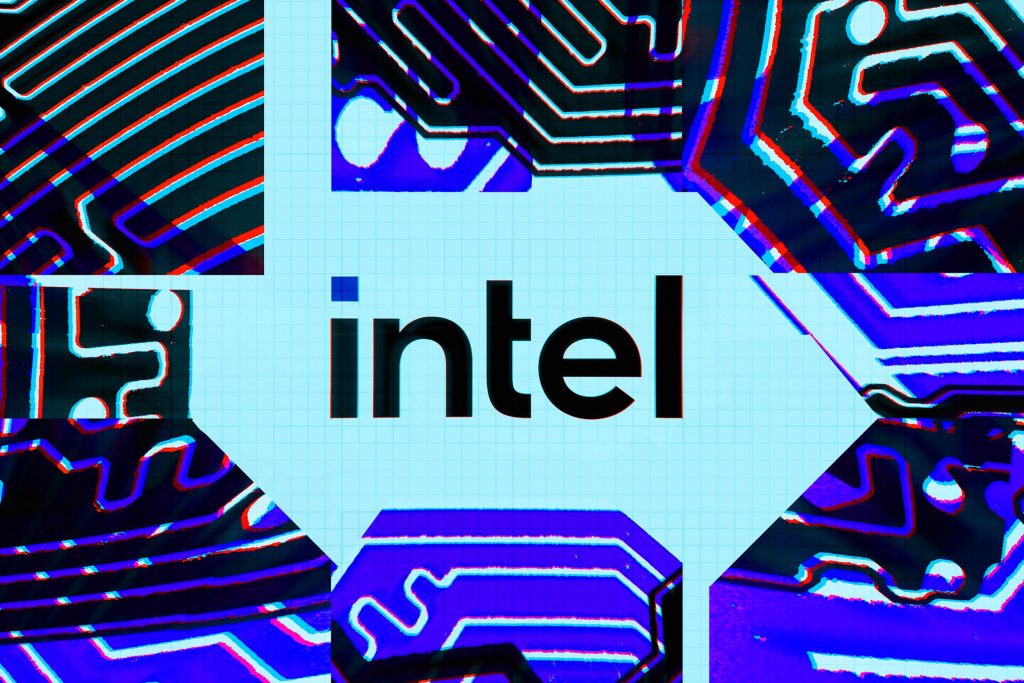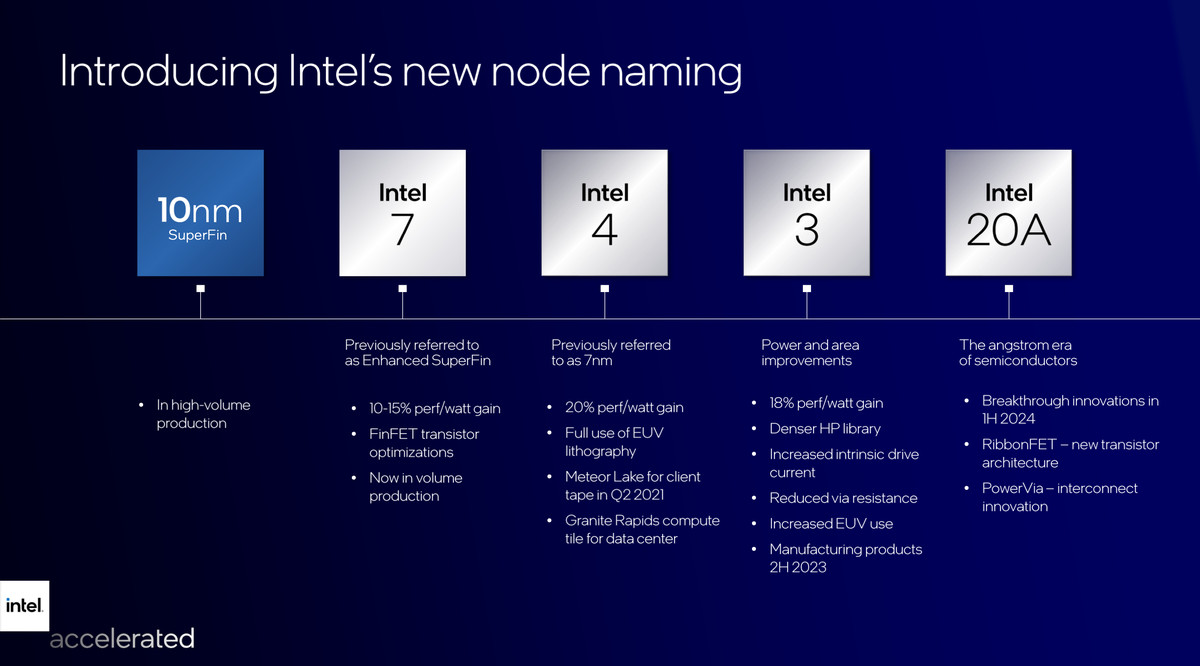In recent news, Intel is looking to once again take the lead in chipmaking as CEO of Intel Pat Gelsinger announced a new processor roadmap, new chips, and more with the promise of an ‘annual cadence of innovation’ by 2025.
At the company’s Intel Accelerated webcast, it was announced that future Intel products will no longer use the nanometer-based node nomenclature which has been used for years. Instead, the company will provide ‘a more accurate view of process nodes across the industry’.
Moreover, the new third-generation 10nm chips will now be referred to as ‘Intel 7’. In addition, the company gave an in-depth glance at how these new Intel processors will be called and what will be their capabilities, and how they stack up to AMD processors. Here’s an overall look:
- Intel 7 as shown above in the roadmap will be a successor to Intel’s second-generation 10nm chips and will offer 10 to 15 percent improvements in performance-per-watt. This includes more improved power efficiency. Intel 7 is set to show up in early 2021.
- Intel 4 is the architecture that was known as Intel’s 7nm process and was forced to face major delay. Since then, now known as intel 4 is set to feature a huge jump in performance-per-watt i.e. an increase by 20 percent.
- Intel 3 is set to manufacturing in the second half of 2023 will offer additional optimizations and through the use of Extreme Ultraviolents (EUV), the Intel 3 will be more performance efficient in comparison to Intel 4. So far there is no official date of when Intel 3 will arrive once it’s manufactured.
- Intel 20A is one of the most substantial announcements the company made as Intel 20A will feature its first new transistor architecture called ‘RibbonFET’. Though the term ‘20A’ might seem confusing it actually refers to the ‘Angstrom era’ which means Intel 20A will be massively small. Similar to Intel 3, there is no final release date for the Intel 20A.
All in all, with such major changes and new architectures the question is can Intel’s new products rival Apple’s M1 chip and the upcoming AMD products?






 BCI Pilots Worker Voice Technology In Pakistan For Cotton Farmers
BCI Pilots Worker Voice Technology In Pakistan For Cotton Farmers